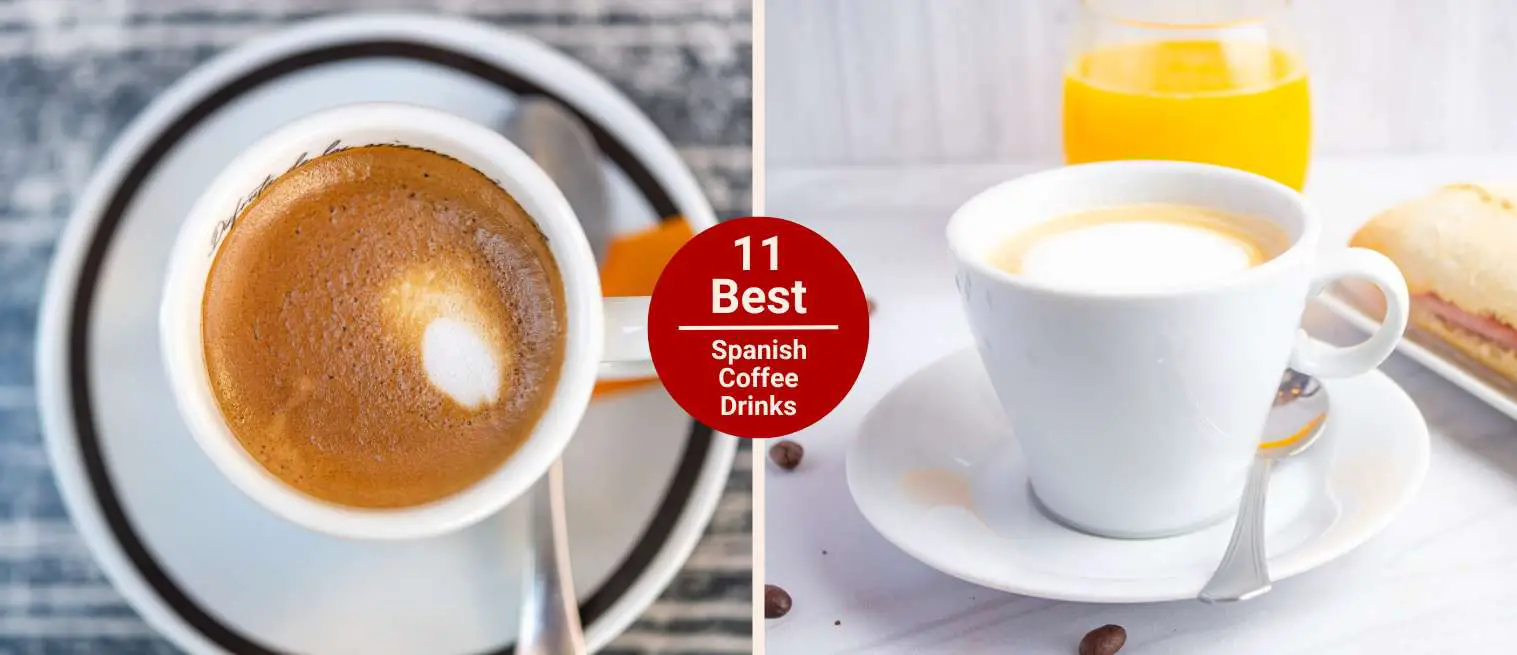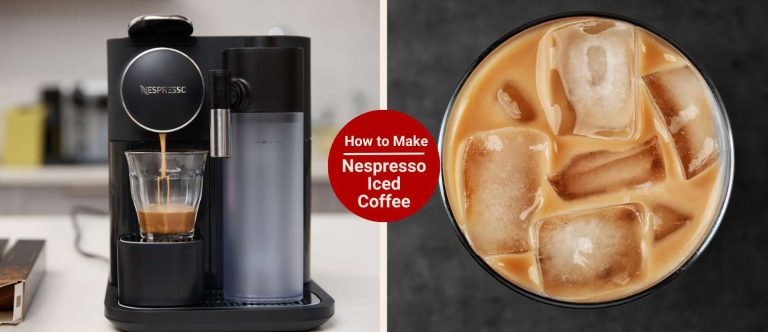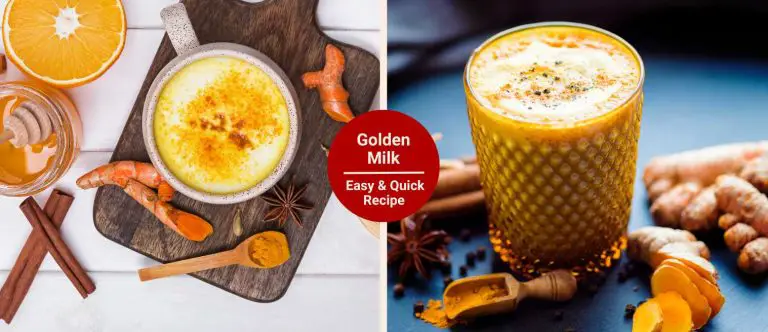11 Best Spanish Coffee Drinks You Must Try
Last updated on June 23rd, 2025 at 02:06 pm
Ever wondered what kind of coffee people drink in Spain?
I have a Spanish friend who owns a small coffee shop right here in Portugal. His whole vibe is laid-back, but he takes coffee seriously.
One day I asked him why his menu didn’t have frappes or flat whites, and he smiled and said, “This isn’t Starbucks. Spanish coffee is about flavor, not foam.”
That stuck with me. Watching his regulars order cortados, café con hielo, or the occasional bombón as if it were second nature made me realize just how rich and varied Spanish coffee drinks are.
In this post, you’ll discover 11 of the most authentic and delicious Spanish coffee drinks from bold espresso-based sips to sweet layered creations. So let’s start brewing!
11 Delicious Spanish Coffee Drinks
So, let’s talk about the drinks you can brew at home or find in a Spanish coffee shop. In case you’re curious also to know more about the best coffee drinks in Portugal, read here.
1 – Café Solo
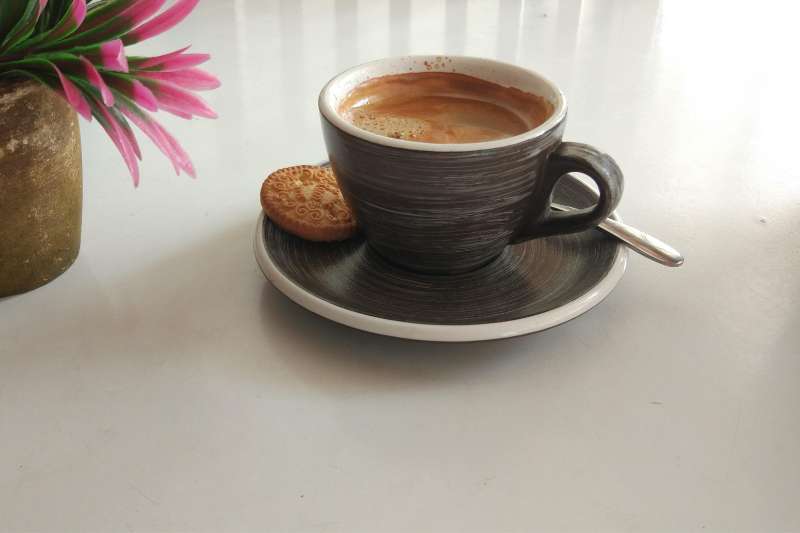
The name “solo” literally means “alone” in Spanish, and that’s the perfect way to describe it; why?
Well, no milk, no sugar (unless you add it yourself), no complications. Rather, it’s just coffee standing solo in the cup. It’s served in a small demitasse, typically about 1 ounce, and is beloved all across Spain.
Often enjoyed morning, afternoon, or even after dinner. What I learned?
Don’t let the size fool you. This tiny drink packs bold, bitter notes and a serious caffeine punch. If you like tasting coffee in its purest form without anything getting in the way, you should try café solo.
And if it’s a bit too intense at first, order a cortado next time. Basically, it’s a café solo cut with a splash of milk.
2 – Café con Leche
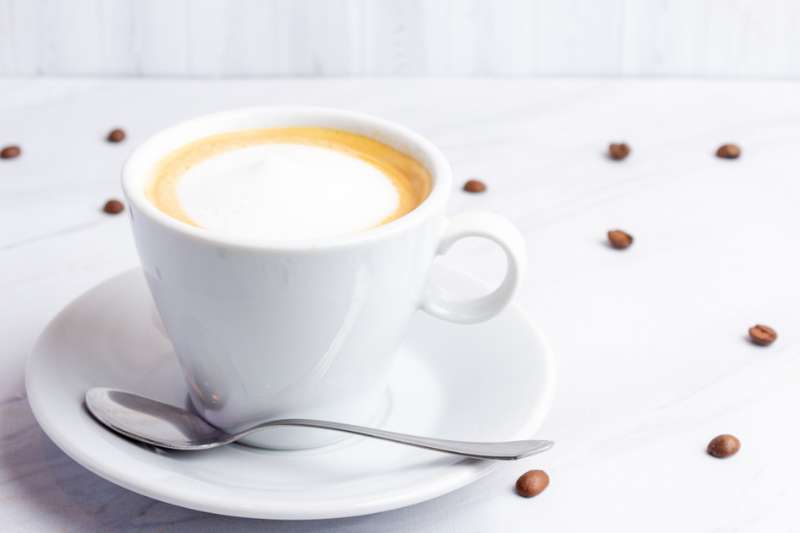
This was Spain’s answer to a latte, and I find it better than most café lattes I’ve had.
Basically, café con leche is equal parts espresso and steamed milk. That balance makes it smoother than a café solo. But still strong enough to feel like a real coffee.
Also, it isn’t as foamy as a cappuccino or fancy like a flat white. Usually, most Spaniards drink it with breakfast, often with toast or a sweet pastry like tostada con tomate or a magdalena.
Now, if you’re making this at home, don’t overthink it. Just pull a shot (or a strong moka pot brew) and steam or heat up some milk (not boiling), just hot enough.
You don’t need to froth unless you want to. Afterward, pour in equal parts, stir if you like, and you’re set.
Pro tip: You can try it with a sprinkle of cinnamon or a splash of condensed milk if you want a sweeter drink. I wouldn’t say it’s exactly traditional, but it works pretty well.
3 – Cortado
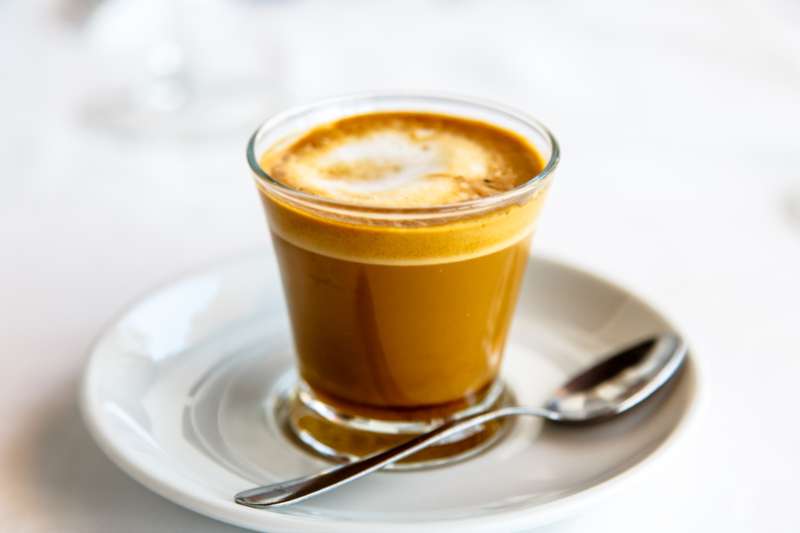
If you’ve ever thought espresso was a little too intense on its own but didn’t want to drown it in milk like a latte, the cortado is your sweet spot.
The word cortado means “cut” in Spanish, and that’s exactly what’s going on here. In other words, the boldness of espresso gets cut with just a small splash of warm milk. It smooths out the sharp edges without completely muting the flavor.
This one’s all about balance. For this reason, it isn’t frothy or foamy like a cappuccino, and it’s not creamy like a flat white.
You get the richness of espresso but with a softer finish. You’ll find it great if you want that coffee kick without the harshness.
In Spain, it’s a go-to after lunch or in the late morning when you’re not in the mood for a full-on café con leche.
And while some cafés may serve it in a small glass, others might use a demitasse. But no matter what, the ratio stays close to 1:1.
4 – Café Bombón
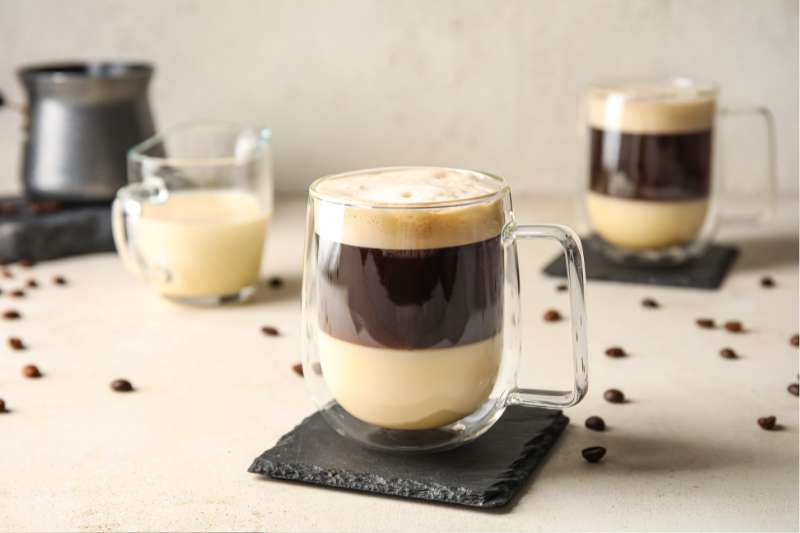
This Spanish coffee drink layers sweetened condensed milk beneath a shot of bold espresso. The combo is sweet, creamy, and intense all at once. And yeah, it looks stunning in a glass.
So, if you’re pulling a 1-ounce shot of espresso, match it with 1 ounce of condensed milk. Originally from Valencia, café bombón started as more of a treat than a morning habit.
Often, it’s served in a small glass to show off those lovely layers like the golden espresso floating above that thick blanket of condensed milk.
You don’t stir it right away either. That first sip, when it’s all coffee? Fantastic! Then you give it a swirl and dive into the sweetness.
I’d say this one’s perfect for anyone who likes their coffee with a dessert twist. It’s especially good after dinner or as a mid-afternoon treat when you’re craving something sugary.
Pro tip: If you want a stronger flavor, ask for a ristretto shot (if you’re in a café) or brew one at home instead of a regular espresso. It packs more richness without overpowering the sweet base.
5 – Carajillo
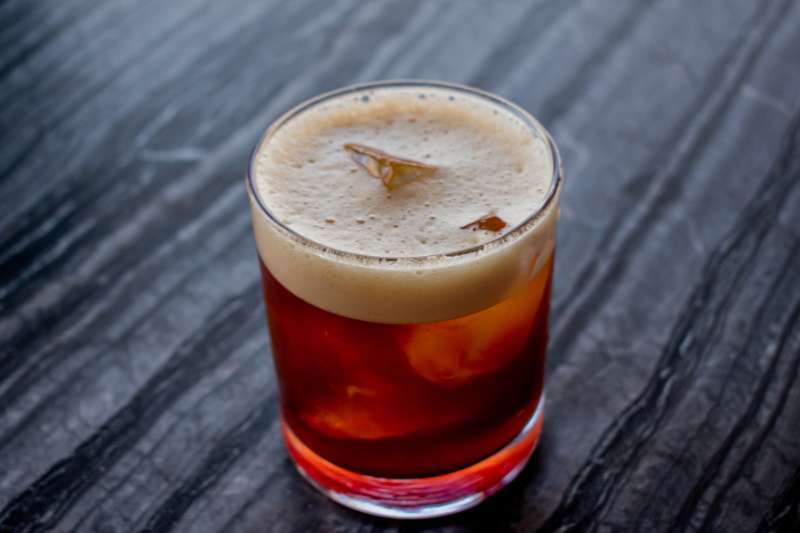
A carajillo is a bold Spanish drink that combines hot coffee with alcohol, most commonly brandy, rum, or even whisky depending on where you order it.
It’s a popular after-dinner choice, especially if you’re the kind of person who wants your dessert and digestif all in one go.
The usual ratio? About 1 ounce (30 ml) of liquor to 1 shot (about 1 oz too) of espresso or very strong coffee. Some places go heavier on the booze, but that’s the baseline.
Furthermore, the preparation varies by region and bartender. In some places, they flame the liquor first (yes, actual fire!) to burn off a bit of the alcohol and add a caramelized note before adding the espresso.
Other times, it’s stirred in for a straight-up mix. Either way, you’ll get a warming drink that’s both robust and aromatic.
Usually, it’s served in a small glass, sometimes with a sugar rim or a lemon peel twist if the bar’s feeling fancy. I’ve seen people add a cinnamon stick or even a splash of Licor 43 to mellow it out with a hint of vanilla.
Pro tip: If you’re making it at home, use a strong shot of espresso and warm the liquor slightly before mixing. This helps it blend better and keeps the whole thing nice and hot.
6 – Leche Manchada
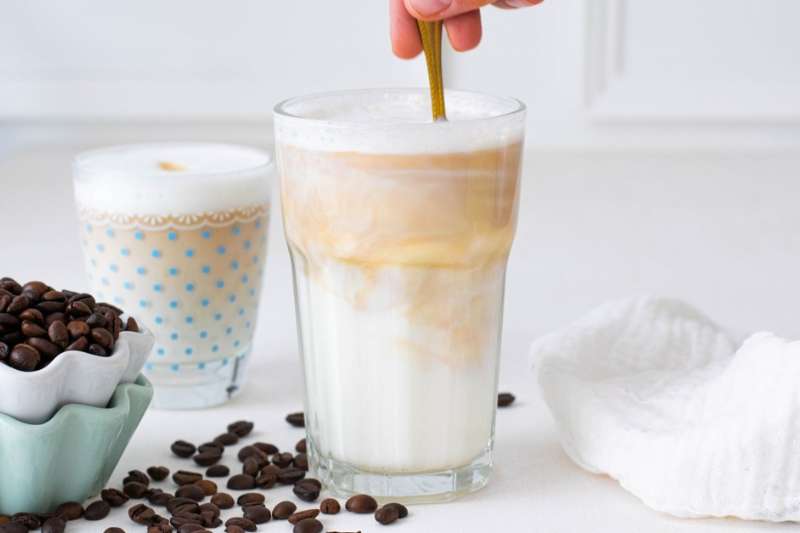
If you’re not looking for a big caffeine kick but still want a hint of that espresso vibe, leche manchada is ideal. The name stands for “stained milk.” That’s pretty much exactly what it is: steamed milk with just a stain or splash of espresso.
In terms of ratio, think 90% milk to 10% espresso or even lighter. Some cafés will swirl in a teaspoon or two of espresso on top of a full glass of hot milk.
You’re not going for a balanced coffee-milk combo like with a cortado or café con leche. This one’s all about giving your warm milk a whisper of roastiness.
It’s especially popular among those who are sensitive to caffeine or want something mellow, maybe after dinner or first thing in the morning. And, it still feels like a proper café drink even though the espresso takes a back seat.
Pro tip: If you’re making it at home, heat and froth your milk like you would for a latte. Then add a small spoonful of espresso over the top and don’t stir. The contrast looks great in a clear glass and adds a subtle aroma that makes it feel more than just milk.
7 – Café con Hielo

Café con hielo is Spain’s way of beating the summer heat without giving up your daily espresso. Basically, it’s “coffee with ice,” and that’s what you get: a shot of hot espresso poured over a few ice cubes.
But don’t let the simplicity fool you; this drink hits differently when done right.
The typical ratio is one standard espresso shot (about 30 ml) to 3–4 medium ice cubes in a short glass. That way, you get enough chill without watering down the coffee too quickly.
Some places will serve the hot espresso and a separate glass with ice, so you can pour it yourself. Others do it for you. Either works fine, but pouring it yourself lets you control dilution a bit better.
Pro tip: You should add your sugar before pouring the espresso over the ice. Otherwise, it won’t dissolve well and you’ll end up with gritty sips.
You could also stir the sugar directly into the hot espresso before adding it to the ice (that’s what most locals do). And if you like a stronger flavor, a double shot (café doble con hielo) is totally fair game.
8 – Café Americano
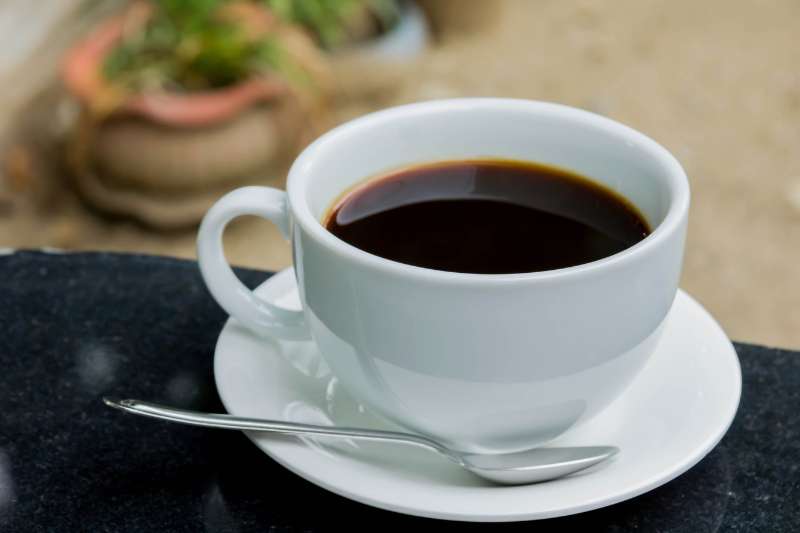
Café Americano is one of those drinks you’ll find on pretty much every Spanish café menu, though it’s definitely not a local favorite.
Essentially, it’s espresso diluted with hot water, a way to extend the coffee’s flavor without making it overly strong. If you’re the kind of person who likes sipping slowly or can’t handle the punch of a café solo, this is your go-to.
The typical ratio is 1 part espresso to 2 parts hot water. However, some spots might go up to 1:3 depending on how mild you want it. So, a single 30 ml shot of espresso would be topped up with around 60–90 ml of hot water.
The water is commonly added after the espresso to preserve the crema, though honestly, not every café is that precise.
It’s a milder brew with a smoother finish, closer to what American-style drip coffee tastes like. That’s probably why it’s often ordered by tourists who want something familiar or want more volume without the intense caffeine hit of straight espresso.
Pro tip: If you want it stronger, ask for a “doppio Americano” or use two shots of espresso.
9 – Café Vienés
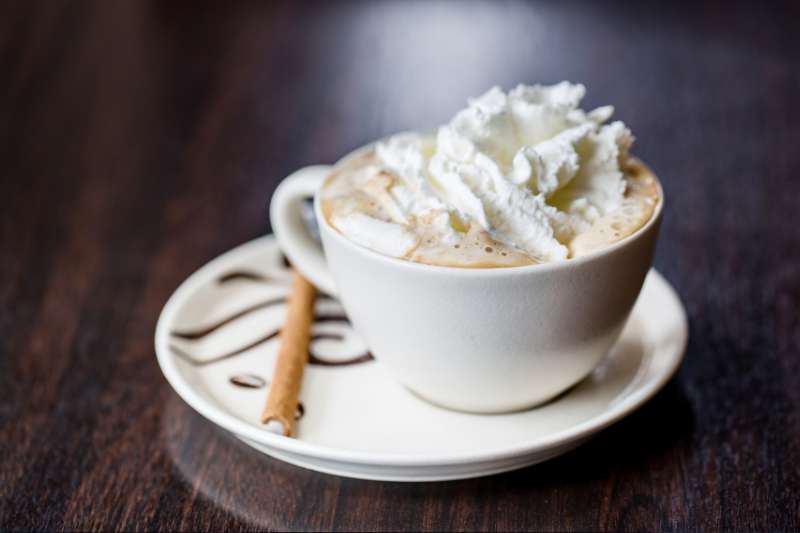
A Café Vienés is dessert disguised as coffee. It’s made by topping a shot or two of espresso with a generous swirl of whipped cream. Usually fresh, not the canned stuff (though, use what you’ve got at home).
The cream floats on top, slowly melting into the coffee and softening the espresso’s boldness without fully replacing it like milk does.
As for ratios, you’re commonly looking at 1 shot (30 ml) of espresso for every 2 tablespoons of whipped cream. However, some places double the espresso if you ask.
The key is contrast: hot and bitter underneath, cold and creamy on top. You don’t need to add milk or sugar. Instead, the richness of the cream mellows out the espresso one sip at a time.
However, this drink isn’t as common as a cortado or café con leche. But you’ll still find it in traditional Spanish cafés that lean a little old-school or lean toward European-style coffee menus.
Also, it works really well with pastries such as pain au chocolat, almond croissants, tarta de Santiago, or even a simple slice of chocolate sponge cake.
Pro tip: If making it at home, chill your glass first and whip your own cream with a tiny bit of vanilla.
10 – Café Asiático
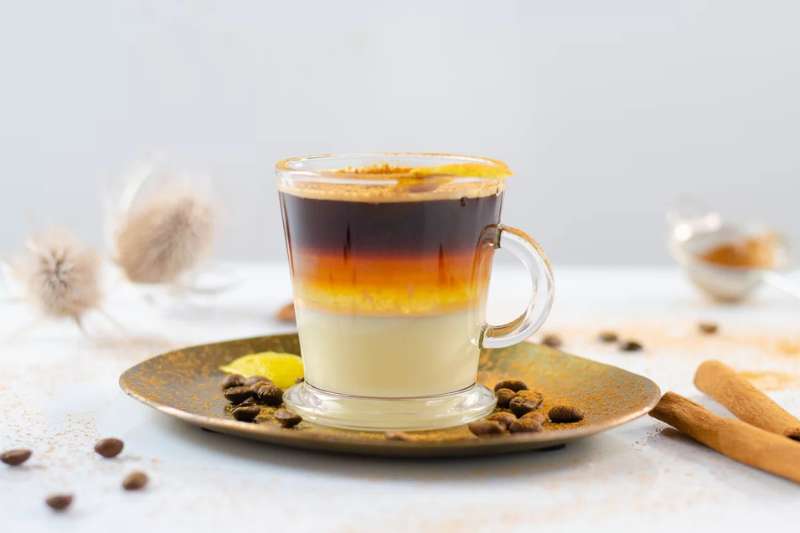
Café Asiático is a rich, spiced coffee drink that’s practically a local treasure in Cartagena, Spain. It’s got that same layered look as a Barraquito. But with a boozier twist and a bit more kick. You’ll frequently find it served in a thick glass. So you can admire the beautiful separation of ingredients before stirring.
The base starts with about 1 part sweetened condensed milk, followed by 1 shot of espresso. Then comes ½ to 1 shot of Licor 43 (or brandy), depending on how strong or sweet you want it.
A dusting of cinnamon often goes on top, and in some versions, you’ll spot a sliver of lemon peel floating or resting on the rim.
It’s meant to be stirred before drinking, although some folks prefer to sip it layered. And it tastes sweet, spicy, and warm, especially with that mix of coffee and liqueur.
Pro tip: If you’re making it at home, heat the condensed milk and liquor slightly before layering to help everything stay cozy without losing the structure.
11 – Barraquito
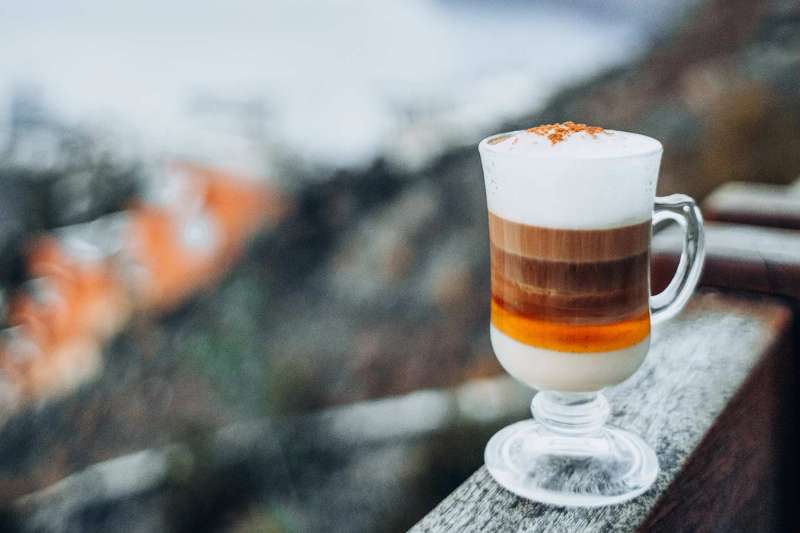
Barraquito is sweet, aromatic, and packed with layers of flavor. Additionally, it’s meant to be served in a clear glass, allowing you to see every stripe of color stack up like a dessert parfait.
Originally from Tenerife in the Canary Islands, it’s a must-try if you’re into sweet coffee creations.
The traditional version is built in layers: start with 1 part sweetened condensed milk, followed by 1 shot of Licor 43. This golden Spanish liqueur adds notes of vanilla, citrus, and spice.
On top of that goes your shot of espresso, then steamed milk, and finally, a little milk foam to crown the whole thing.
You can garnish it with a sprinkle of ground cinnamon and a small strip of lemon peel are standard. That citrusy aroma hits as you bring the glass up for a sip.
You shouldn’t stir it right away. Half the fun is sipping through the layers and letting the flavors mix in your mouth.
Pro tip: if you want it more dessert-y, you can go heavier on the condensed milk. Just don’t skip the lemon zest; it ties everything together in a way that’s hard to explain but enjoyable.
Last Thoughts
Have you tried any of these before? What was your favorite, and did it live up to the hype?
Or maybe you’ve stumbled upon a regional Spanish coffee that didn’t make this list? Drop your tips or discoveries below. I’m always curious to know more.

